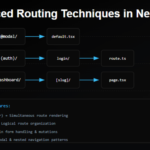Introduction
Python, a versatile and popular programming language, is known for its simplicity and readability. One of its standout features is list comprehension, a concise and efficient way to create lists. This technique not only enhances code readability but also boosts performance. In this article, we’ll delve into the concept of Python list comprehension, understand its syntax, and explore real-time use cases that highlight its power. Find the GitHub link below to the exhaustive Python examples and List Comprehension example.
Understanding Python List Comprehension
List comprehension is a compact and elegant method for creating lists in Python. It combines iteration, conditionals, and value assignment into a single expression. This approach eliminates the need for traditional for-loops, leading to cleaner and more readable code.
Syntax of List Comprehension
new_list = [exp for item in iterable if cond]So basically we have 3 components
- exp(expression): It is the operation that we want to perform like capitalizing words example “[word.capitalize() for word in words]”. Here word.capitalize() is an expression to capitalize string value.
- item: Iterable item (e.g., list, tuple, string) that are being iterated.
- iterable: The collection of items that are being iterated.
- cond(Condition): Filter condition that can be applied example. [score for score in scores if score >= 80]. Here score >= 80 is a filter condition to filter values that the greater or equal to 80.
Benefits of List Comprehension
- Readability: List comprehensions encapsulate complex operations into a single line, making the code more readable and concise.
- Performance: List comprehensions are often faster than traditional loops, as they leverage the underlying C implementation of Python.
Filter list traditional way using for-loop vs using list comprehension
Let’s compare examples of using list comprehension and traditional for-loops to achieve the same results. We’ll use both methods to create a new list containing 5 divisible values.
Using List Comprehension:
numbers = [5, 10, 22, 35, 55]
dividedlist = [num / 5 for num in numbers]
print(dividedlist)Using Traditional For-Loop:
dividedlist = []
for num in numbers:
dividedlist.append(num / 5)
print(dividedlist)In both cases, the output will be [1.0, 2.0, 4.4, 7.0, 11.0].
As you can see, the list comprehension version is more concise and requires fewer lines of code. It combines the iteration, square operation, and list appending into a single line, which improves code readability and reduces the likelihood of introducing errors.
On the other hand, the traditional for-loop version requires more lines and includes the explicit setup of an empty list, manual iteration, and appending elements within the loop. While this approach is also valid and functional, it can become more cumbersome to read and maintain as the complexity of the code increases.
List comprehension shines when performing simple operations on elements of a list or any iterable. For more complex scenarios or when multiple operations need to be performed within the loop, the traditional for-loop might be more appropriate. However, for tasks that involve simple transformations or filtering, list comprehension provides a cleaner and more Pythonic way to achieve the desired outcome.
Real-time Use Cases
Filtering Data
Consider a scenario where you have a list of student scores, and you want to filter out only the scores that are above a certain threshold.
scores = [85, 92, 78, 95, 88, 72, 98]
passing_scores = [score for score in scores if score >= 80]Output = [85, 92, 95, 88, 98]
In this use case, list comprehension helps you quickly extract the passing scores from the original list, creating a new list that contains only the relevant data. The output list contains values that the greater or equal to 80.
Creating Transformed Lists
Imagine you have a list of words, and you need to generate a new list with each word capitalized.
words = ['hello', 'world', 'python', 'list', 'comprehension']
capitalized_words = [word.capitalize() for word in words]
print(capitalized_words)Output = [‘Hello’, ‘World’, ‘Python’, ‘List’, ‘Comprehension’]
Here, list comprehension is utilized to create a new list containing the capitalized versions of the words from the original list.
Conditional Mapping
Suppose you have a list of test scores, and you want to categorize each score as either a “Pass” or a “Fail” based on a certain threshold.
scores = [85, 92, 78, 95, 88, 72, 98]
result_categories = ['Pass' if score >= 80 else 'Fail' for score in scores]
print(result_categories )
Output = [‘Pass’, ‘Pass’, ‘Fail’, ‘Pass’, ‘Pass’, ‘Fail’, ‘Pass’]
List comprehension is employed to generate a new list that assigns “Pass” or “Fail” to each score based on the condition provided.
Nested List Comprehension
In more complex scenarios, you might have a nested structure like a matrix, and you need to extract and manipulate its elements.
matrix = [[1, 2, 3], [4, 5, 6], [7, 8, 9]]
flattened_matrix = [num for row in matrix for num in row]
print(flattened_matrix)Output = [1, 2, 3, 4, 5, 6, 7, 8, 9]
Here, nested list comprehension is used to create a flattened list of all the numbers in the matrix, making it easier to perform further computations.
Coding is fun. Find the GitHub link here – Github
Conclusion
Python list comprehension is a versatile and efficient technique that offers various real-time applications, from data filtering and transformation to conditional mapping and handling nested structures. By leveraging list comprehension, programmers can simplify code, improve readability, and enhance performance. These real-time use cases illustrate how list comprehension streamlines various tasks, enabling developers to work with data more effectively and write cleaner, more elegant code. Whether you’re working on data manipulation, analysis, or any other programming task, mastering list comprehension can significantly boost your productivity and coding proficiency.









